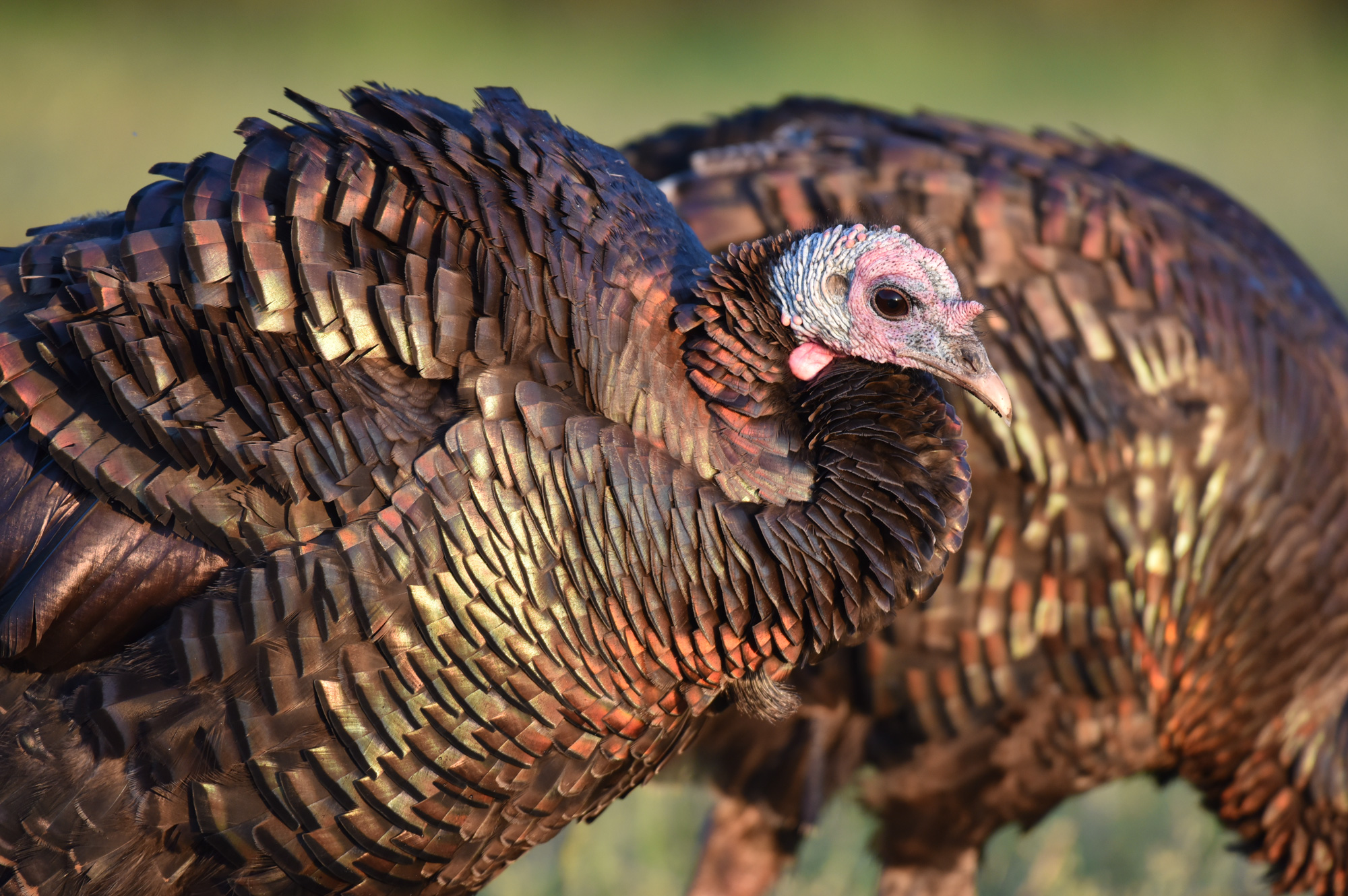Wild Turkey Population Threats
Wild turkey populations fluctuate due to a variety of reasons.
When the National Wild Turkey Federation was founded in 1973, there were approximately 1.5 million wild turkeys in North America. After 40 years of effort, that number has reached a historic high of about 6.7 million turkeys.
However, the NWTF and conservationists will always be working to keep healthy wild turkey populations across the country. Learn about what drives populations to fluctuate below.
Habitat Loss
Loss of prime turkey habitat via development, urbanization, intensive agriculture and industrialization means less land for turkeys to inhabit. When good turkey habitat, such as woodlots, riparian zones (areas around rivers and streams) and grasslands transition into parking lots or massive agricultural fields, nesting success is negatively impacted and populations decrease.
Habitat Quality
In addition to the loss of habitat, the lack of high-quality habitat also influences turkey populations. Turkeys need successional habitat, meaning different stages of forest growth to flourish. They require early successional habitat, which is made of grasses and low shurbs, for brood-rearing, paired with stands of mature forests for roosting. As forests mature, good nesting habitat is limited. Without the proper habitat wild turkey populations begin to fluxuate.
Diseases
Although disease is more prevalient in domestic turkeys, that doesn't mean wild turkeys are immune to illness. Fortunately, wild turkeys aren't confined to specific areas and therefore, their proxmity to other birds tends to be greater than their domestic counterparts. Because of this, biologists are less concerned about the mass spread of disease in wild populations. Regardless, there are several diseases to take note of among our wild flocks including LPDV (lymphoproliferative disease virus), west nile, avian influenza and mycoplasmosis. Learn more about how these diseases affect our birds in the article by James Earl Kennamer, Ph. D, entitled What's Ailing Wild Turkeys.
Predators
Many people believe that predators are to blame for decreased wild turkey populations, but new research proves that production, not predation, drives turkey populations. Predators are certainly a cause of mortality, but in good habitat, hens can conceal their nests from efficient nest predators such as raccoons, opossums and snakes. And with good over-head cover, young poults can go unseen from avian predators such as owls, hawks, crows and ravens. Coyotes and foxes will also have a difficult time locating nests and poults in good nesting and brood-rearing habitat. Read more about wild turkeys and predators here.
Weather
Turkeys can handle any degress of cold, as long as they have food. For our northern birds, snow can be a big issue. Large quantities of snow cover food sources which can lead to turkey mortality. Biologists also know cold, wet, spring weather affects poult survival and can cause short-term population swings. With unfavorable spring weather, poults often get wet and cold. When this happens, they may not be able to generate enough body heat and can die from exposure or dehydration. When wet, poult body odor can also become intensified making them easier to locate for nearby predators. On the opposite extreme, dry conditions and drought prevent plants from growing and can lead to starvation.
What Can You Do?
Although some aspects of population control are out of our hands, most species rely on human intervention to ensure optimal habitat exists where creatures can live and thrive.
Increase the Productivity of Wild Turkey Populations
Knowing how to increase carrying capacity for wild turkeys is key to increasing or maintaining their populations. And it’s accomplished through managing the right types of habitat.
In the majority of the wild turkey’s 800 million-acre range, the most critical habitat supports nesting and brood rearing.
If we can improve and maintain nesting and brood rearing habitat across the landscape it will significantly increase the carrying capacity and in turn yield more sustainable wild turkey populations.
Fostering good nesting and brood rearing conditions by actively managing the land you hunt through carefully-planned timber harvest and thinning, prescribed fire and permanent openings maintenance and enhancement is one way you can help. Other sound management practices include controlling invasive plants and providing food sources year-round with well-managed food plots and forest openings. All of these practices are vital for sustaining wild turkeys as well as many other game and nongame upland species.
So, other than managing your own properties, how can you help save the habitat and keep the hunt going for future generations? It’s really pretty simple and you’ve already started by being an active NWTF member. Your financial contributions and time as a volunteer support the NWTF’s habitat initiatives and activities. Most of them are focused at increasing carrying capacity for wild turkeys by not only improving the critical nesting and brood habitat, but also carefully looking at year-round habitat needs like winter food, water availability and harvest potential. With your support these initiatives will sustain upland game species and foster the next generation of hunters. Working toward the same goals, we can make a difference.
